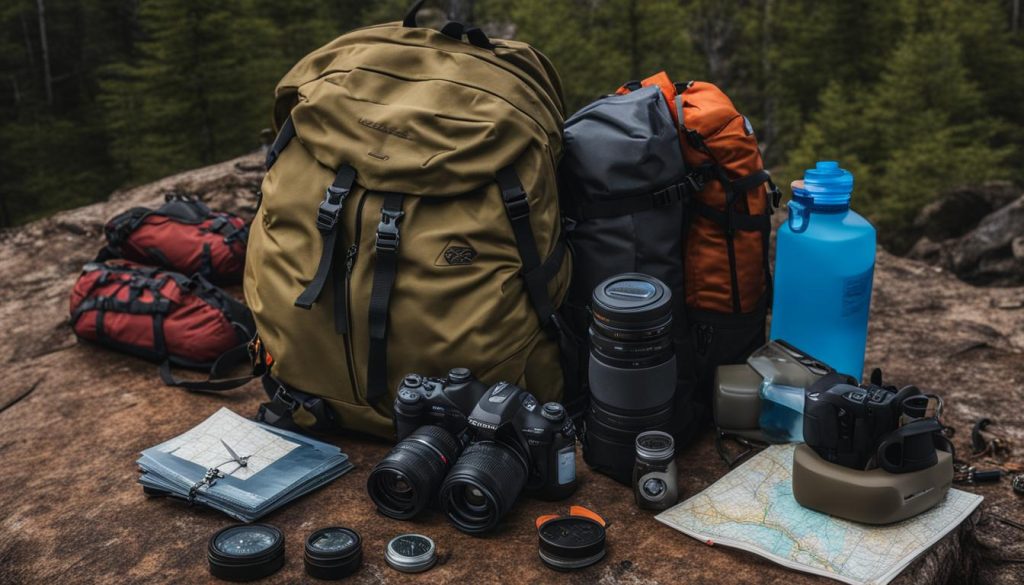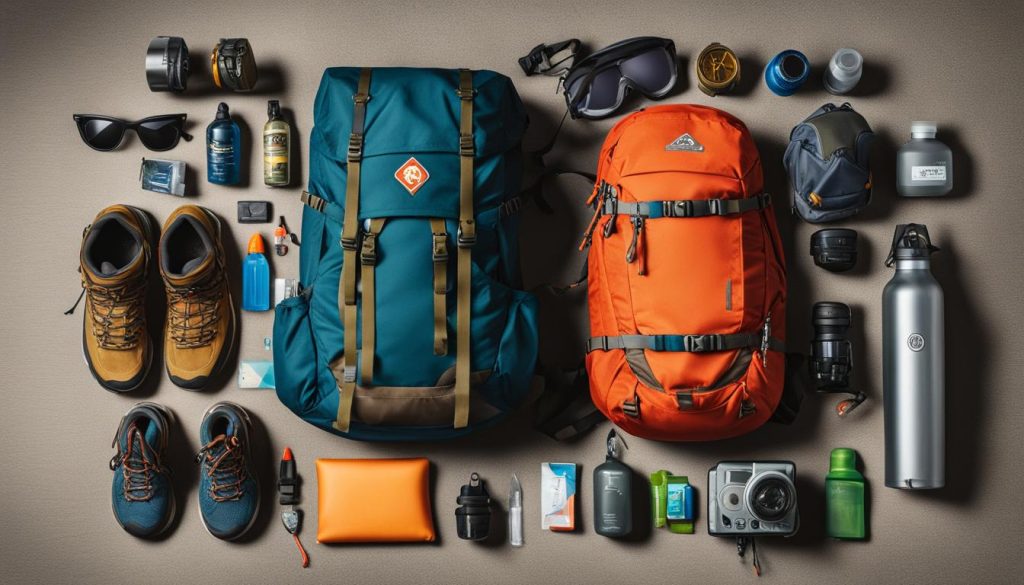Planning a multi-day hiking trip requires careful consideration and organization. Follow these steps to ensure a safe and successful adventure.
Choose Your Trail and Route Details: Select a trail based on factors such as time vs. distance, personal preferences, aesthetics, and weather conditions.
Plan How Many Days You Will Spend on the Trail: Determine the duration of your hiking trip based on the trail’s length and your available time.
Check for Permit Requirements: Research if any permits are required for the backcountry areas you plan to visit.
Set Up a Transportation Plan: Consider the transportation options to and from your starting and ending points of the trail.
Establish Your Gear List: Customize your gear list based on the specific trail, trip duration, and camping preferences.
Plan Your Meals: Carefully plan and pack lightweight, nutritious meals for your multi-day hike.
Keep Safety in Mind: Take safety precautions, including thorough route knowledge, weather preparedness, and informing others of your plans.
Remember Best Practices for the Trail: Practice Leave No Trace principles to minimize your impact on the environment and preserve the backcountry for future generations.
Key Takeaways:
- Choose a trail based on your preferences and the trail’s characteristics.
- Determine the duration of your hiking trip according to the trail’s length and your available time.
- Research and obtain any necessary permits for backcountry areas.
- Create a transportation plan for your journey.
- Pack essential gear and customize your gear list based on the specific trail and trip duration.
Tips for Choosing the Right Destination and Gear
When planning a multi-day hiking trip, one of the most important decisions you’ll make is choosing the right destination. Consider your goals and abilities as a hiker and research thoroughly to find a trail that matches your preferences. Whether you’re seeking a challenging mountainous terrain or a scenic coastal hike, there are a few key factors to keep in mind.
Research Hiking Routes
Before settling on a destination, take the time to research various hiking routes. Look for reviews and trip reports from fellow hikers to get a sense of the trail’s difficulty level, scenery, and any potential challenges you may encounter. Consider the length and elevation gain of the trail to ensure it aligns with your fitness level and hiking experience.
Selecting Appropriate Hiking Gear
Choosing the right gear is crucial to a successful multi-day hiking trip. Start with essential hiking equipment such as a sturdy backpack, comfortable hiking boots, and moisture-wicking clothing. Layering is key for varying weather conditions, so pack lightweight, breathable clothing that can be easily adjusted throughout the day. Don’t forget important items like a head torch, first aid kit, and navigation tools. Consult a backpacking gear checklist to ensure you have everything you need for a safe and comfortable journey.
Prepare Mentally and Physically
Embarking on a multi-day hiking trip requires mental and physical preparation. Training in similar conditions, acclimating to higher elevations, and building up your hiking endurance beforehand can help prevent injuries and make the journey more enjoyable. Familiarize yourself with the terrain, weather patterns, and potential hazards of your chosen destination. Understanding the challenges ahead and being mentally prepared will enhance your overall hiking experience.
Remember, it’s important to be respectful of the environment and local customs. Adhere to Leave No Trace principles, pack out your trash, and follow any regulations set forth by the park or trail management. By choosing the right destination and gear, and preparing yourself both mentally and physically, you’ll be well on your way to a rewarding and unforgettable multi-day hiking adventure.

Conclusion
Planning a successful multi-day hiking trip requires careful consideration and preparation. By following these tips for a safe backpacking adventure, you can ensure an enjoyable and memorable experience in the great outdoors.
First and foremost, choose the right trail that aligns with your preferences, abilities, and goals. Research thoroughly and take into account factors such as distance, time, aesthetics, and weather conditions. This will help you select a trail that suits your needs and enhances your overall hiking experience.
Next, pay attention to the details. Understand the route and trail logistics, including any permit requirements and transportation arrangements. Customize your gear list to match the specific trail, trip duration, and camping preferences. Don’t forget to pack lightweight, nutritious meals to fuel your adventure.
Finally, prioritize safety and be mindful of Leave No Trace principles. Take necessary precautions, such as acquiring thorough route knowledge, being prepared for different weather conditions, and informing others of your plans. Respecting the environment and local customs will contribute to a sustainable and responsible hiking experience.
With proper planning and preparation, you can embark on a multi-day hiking trip with confidence, knowing that you have taken the necessary steps to ensure a safe and successful backpacking adventure. So pack your bags, lace up your boots, and get ready to create lasting memories in the great outdoors!
FAQ
How do I choose the right hiking destination?
Consider your goals and abilities when selecting a hiking destination. Research thoroughly to find a trail that matches your preferences in terms of difficulty, scenery, and terrain.
What gear do I need for a multi-day hiking trip?
Essential gear for a multi-day hiking trip includes comfortable hiking boots, breathable layers, a lightweight waterproof jacket, and equipment like a head torch. Make sure to also pack camping essentials such as a tent, sleeping bag, and cooking supplies.
How should I prepare physically for a long-distance hike?
To prepare physically for a long-distance hike, train in similar conditions to the route you will be hiking. Gradually build up your endurance by increasing your hiking distances and elevations. Acclimate to higher elevations if necessary.
What are Leave No Trace principles?
Leave No Trace principles are guidelines that promote responsible outdoor practices. They include minimizing your impact on the environment by packing out trash, camping in designated areas, and respecting wildlife and vegetation.
How can I ensure my safety during a multi-day hiking trip?
Prioritize safety during your hike by thoroughly researching the route, checking weather conditions, and informing others of your plans. Carry essential safety items such as a map, compass, first aid kit, and emergency shelter. Always be prepared for unexpected situations.



